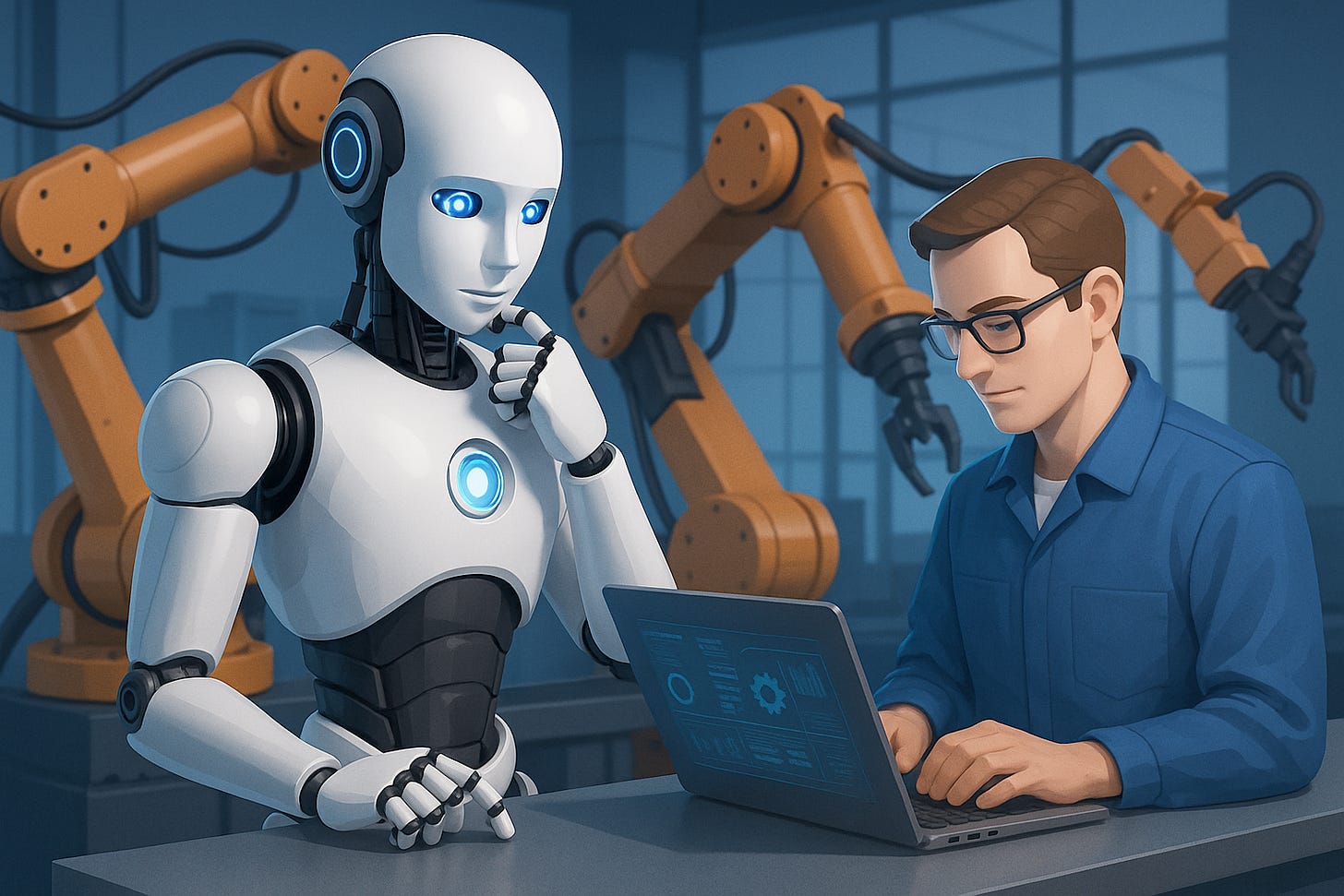From robotic arms on assembly lines to autonomous delivery drones and robotic-assisted surgeries, the robotics revolution is well underway. No longer confined to science fiction or industrial niches, robots are permeating our daily lives and reshaping the global economy.
Driven by advances in artificial intelligence, sensor technology, and computing power, robotics is unlocking massive productivity gains. But as with any disruptive technology, it raises important questions — especially around employment, social equity, and how humans and machines will coexist in the workplace of the future.
Productivity Supercharged: Robots as Economic Force Multipliers
Robotics is driving one of the most significant shifts in productivity since the Industrial Revolution. Here’s how:
Manufacturing & Assembly
Robots have been at the heart of industrial automation for decades, but today’s machines are faster, more precise, and increasingly autonomous. In automotive plants, robotic arms now handle complex welding, painting, and assembly tasks 24/7 — often with greater consistency and lower defect rates than humans.
The integration of machine vision and AI allows these robots to perform quality inspections in real time, minimizing waste and reducing downtime.
Warehousing, Logistics, and Retail
Companies like Amazon, Alibaba, and Ocado have revolutionized fulfillment centers by deploying fleets of mobile robots to transport goods across warehouses. These systems reduce human strain, optimize storage, and enable faster order processing. Robots also help restock shelves in retail stores and even deliver goods to customers’ doors.
By 2030, logistics automation is projected to save companies over $200 billion annually in labor and error-reduction costs.
Healthcare & Surgery
In medicine, robots are not replacing doctors — they’re enhancing their abilities. Robotic-assisted surgery platforms (e.g., Intuitive Surgical’s da Vinci system) allow for minimally invasive procedures with greater precision, reducing patient recovery time and hospital stays.
Beyond the operating room, robots assist in patient mobility, disinfection, and telemedicine — helping care teams manage growing workloads in aging societies.
Agriculture & Food Production
Agricultural robots, or “agbots,” use computer vision and sensors to monitor soil conditions, detect pests, and harvest crops with pinpoint accuracy. Drones survey fields and apply fertilizers more efficiently, while autonomous tractors reduce the need for human labor in large-scale farming operations.
These innovations help address global food security challenges by increasing yield and reducing resource consumption.
The Employment Question: What Happens to Human Workers?
As robotics technology advances, concerns about job displacement are rising. But the reality is more nuanced.
Jobs Most at Risk
Tasks that are repetitive, predictable, and low-skill are the most vulnerable. This includes:
Assembly line workers
Warehouse pickers
Cashiers and fast-food workers
Truck drivers and delivery personnel (as autonomous vehicles mature)
The 2020 World Economic Forum report estimated that 85 million jobs could be displaced by automation by 2025, particularly in industries like manufacturing and transport.
Jobs Reimagined
Many roles won’t be eliminated, but redefined. Humans will increasingly supervise, program, and maintain robotic systems, while also performing tasks that require creativity, emotional intelligence, and strategic thinking.
A warehouse worker may become a robot fleet manager. A surgeon may control robotic instruments remotely. A factory technician may train machine learning algorithms to optimize processes.
Upskilling and reskilling will be critical — especially for mid-career workers.
Jobs Created
Just as the internet created web developers and digital marketers, robotics is spawning new professions:
Robotics engineers and AI developers
Automation integration specialists
Human-machine interface (HMI) designers
Ethical AI consultants
Cyber-physical security experts
The same WEF report estimates that 97 million new roles could emerge in the same timeframe, often in technology, data analysis, and human care industries.
The Inequality Challenge
The benefits of robotics are not distributed evenly. Workers in lower-income or less-educated segments face greater risks of displacement. Without policy intervention — such as access to training, education reform, and safety nets — automation could exacerbate inequality.
Governments and corporations must collaborate to ensure a just transition.
What’s Next for Robotics? A Glimpse Into the Future
Robotics is evolving rapidly — not just in function but in form, intelligence, and adaptability.
Collaborative Robots ("Cobots")
Unlike traditional industrial robots that operate in isolated cages, cobots are designed to work safely alongside humans. They assist with tasks like assembly, loading, or packaging while humans handle complex decision-making.
Cobots are especially useful in small-to-mid-sized businesses due to their lower cost, ease of deployment, and versatility.
Smarter Autonomy with AI Integration
The convergence of robotics and AI enables machines to process sensory data, make decisions, and adapt to changing environments.
Examples include:
Autonomous drones that avoid obstacles while mapping terrain
Robotic cleaners that learn room layouts
AI-powered exoskeletons that help mobility-impaired individuals walk
This is the shift from pre-programmed tools to context-aware partners.
Expansion into Service Robotics
We’re already seeing a surge in consumer and commercial service robots:
Robot vacuums and mops (like Roomba)
Hotel service bots for room delivery
Robots for elderly care and companionship
Automated bartenders, chefs, and baristas
As hardware becomes more affordable and AI improves, service robots will become as common as smartphones.
Humanoid and General-Purpose Robots
Companies like Tesla, Agility Robotics, and Figure AI are developing humanoid robots capable of walking, climbing stairs, and manipulating objects — ideal for environments designed for humans.
While still early-stage, these systems could eventually fill roles in elder care, education, security, or even disaster response.
Final Thoughts: A New Human-Machine Partnership
Robotics is not just a tool — it’s a force reshaping economies, industries, and the future of work. It offers massive upside in productivity, safety, and convenience, but also forces us to confront questions of equity, ethics, and adaptation.
Rather than fear the rise of robots, we must guide it — through smart investments, thoughtful policies, and continuous education. The future of robotics is not just about machines replacing people — it’s about machines empowering people to do more, achieve more, and create new value in ways we’ve never imagined.
Note: Not investing advice.
Stay nimble my friends



